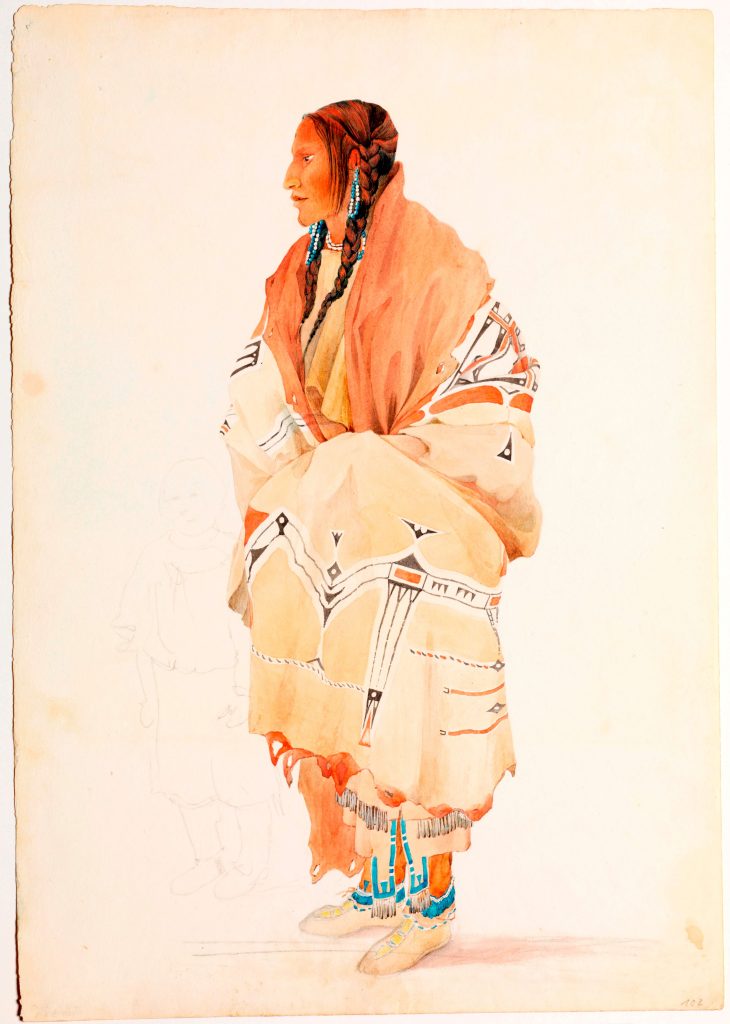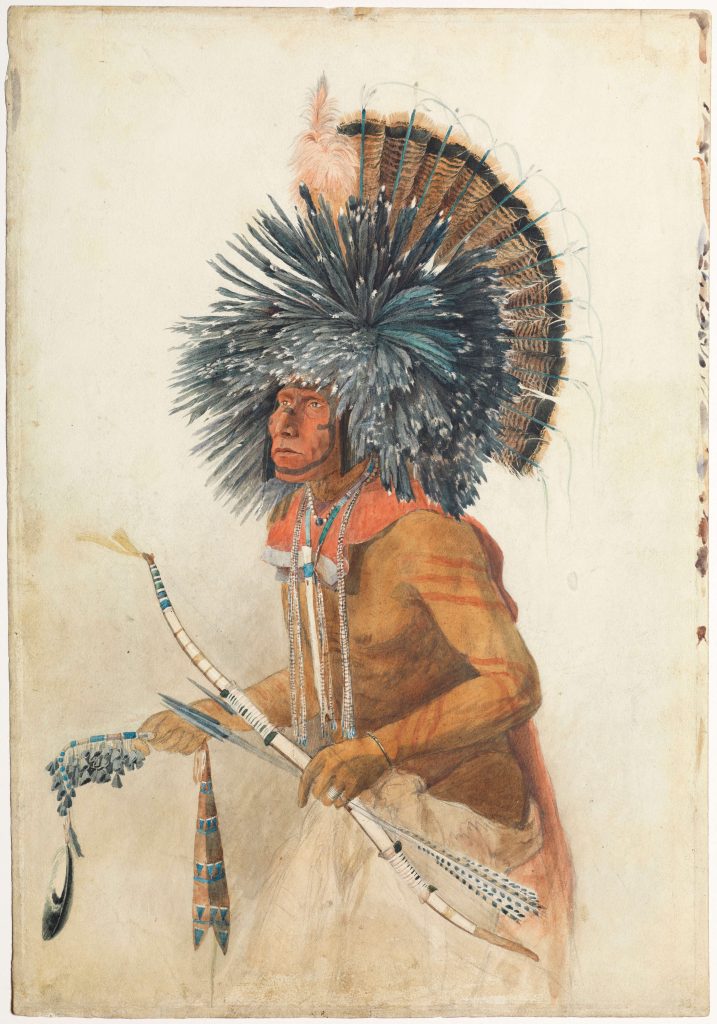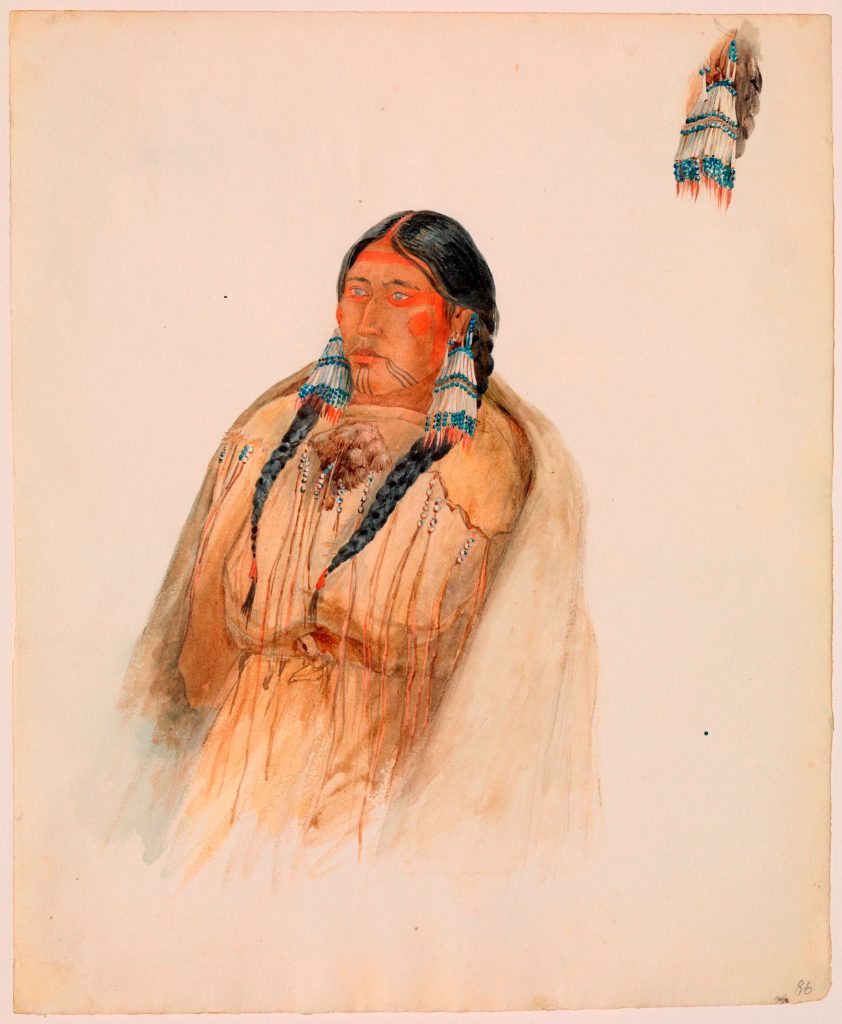5 American Impressionists You Need to Know
Impressionism is an art movement that originated in France in the 19th century. Artists associated with this movement are known for their dream-like...
Ruxi Rusu 16 September 2024
The 2021 Karl Bodmer: North American Portraits exhibition at the Metropolitan Museum of Art in New York City showcased compelling 19th-century watercolors of Native Americans. Learn more about this Swiss artists who traveled to America and produced sensitive and fascinating portraits of Native Americans he encountered.
In 1833, Swiss artist Karl Bodmer (1809-1893) traveled to the United States. Along with the German explorer Maximilian, Prince of Wied-Neuwied (1782-1867), Bodmer spent a year among Native American communities along the Missouri River. Prince Maximilian wanted to study Great Plains cultures, such as the Omaha, Mandan, and Blackfeet. Therefore, he hired Bodmer to document his voyage. Prints based on Bodmer’s numerous sketches and watercolors later populated Prince Maximilian’s extensive publication about his journey.
Of these images, Bodmer’s portraits of the Native Americans he met in the mid-west are by far the most interesting. Karl Bodmer: North American Portraits included 35 of these watercolor portraits, along with selected other works. All were on loan from the Joslyn Art Museum in Omaha, NE, which owns the full archive of Bodmer’s illustrations and Prince Maximilian’s journals.

Karl Bodmer: North American Portraits was a small show. Appreciating these highly-detailed works requires time and attention, though, so there’s still a lot to take in and think about.
Personally, I found the portraits to be sensitive and fascinating. Bodmer presented sitters of all ages and social positions with quiet dignity. Despite frequent time constraints, he created detailed and skillful watercolor paintings. They’re not quite true portraits, in my opinion, but they were never intended to be. However, they far exceed the simple travelogue illustrations as they might have been in the hands of a different artist. Reserved but respectful, these watercolors are neither intimate nor impersonal.
Karl Bodmer placed much emphasis on his subjects’ often-elaborate clothing, jewelry, hairstyles, tattoos, and body paint. This focus played into his patron Prince Maximilian’s ethnological interests. But, as we learned in the exhibition, personal adornment also carried great significance to the individuals depicted. It displayed their allegiances, celebrated their achievements, and indicated their places in society.

Prince Maximilian;s extensive journals provided much information about Bodmer’s subjects and the circumstances of their portraits (one of the journals appeared in the exhibition). Glimpses of these stories were presented in the wall texts, which revealed the native sitters’ agency and active self-representation. From their diplomatic exchanges with Prince Maximilian’s group to their choices about how Karl Bodmer portrayed them, they were by no means passive in the portrait-making process.
Alongside these more typical wall texts were even more interesting ones – those written by present-day Native Americans. Contributors included artists, scholars, descendants of the sitters, and other members of the communities depicted. Each text focused on something different – beadwork, a coming-of-age ceremony, healing knowledge, etc. – either depicted or hinted at in the portraits.

Obviously, the specter of colonialism hung over an exhibition of a European artist’s images of Native Americans. As a result, every viewer likely received Karl Bodmer’s portraits differently. Some might have found them to be sensitive and respectful, while others might have seen them as uncomfortable or objectifying instead. Since it’s impossible to fully understand the dynamics of interactions that took place almost 200 years ago, all we can really do is look at the images and form our own opinions based on them. I appreciate, therefore, that The Met didn’t try to tell visitors how to feel about this exhibition. I saw a decent amount of interest in this somewhat obscure artist during my visit.
DailyArt Magazine needs your support. Every contribution, however big or small, is very valuable for our future. Thanks to it, we will be able to sustain and grow the Magazine. Thank you for your help!